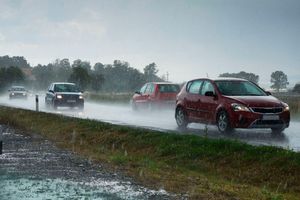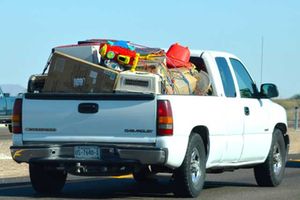
Whenever visibility is compromised you should always turn on your headlights.
Why do so many drivers not turn on their headlights in foggy conditions? Surely everyone must realise that when oncoming vehicles use headlights, they can be seen from further away and more clearly.
They must notice that those using only sidelights or no lights at all are much less visible and can be very close before they emerge from the gloom.
I can think of three reasons, and none of them is very clever. One, they may believe that headlights are draining their batteries, which may not be in the best of health. Two, they may consider that loading the alternator to charge the battery more will consume more fuel. Three, they may suffer from a “me, me me” syndrome which is so widely apparent in much traffic conduct, and find that turning on their own headlights does not improve their own vision, and the welfare of others doesn’t even cross their minds. Evidence of that is not in short supply.
Small alternators produce about 40 Amps at peak. Half of that is enough to meet ignition demands and to replace the draw from two dipped headlamps with road-legal bulbs. Large vehicles have 70 Amp alternators, and even bigger options are available. Rally cars running up to eight high-powered headlamps and spotlights used to fit 90 Amp alternators, producing more than 1,000 watts.
Power to run an alternator does come from the engine, so a bigger load on the alternator will draw more power from the engine…and hence consume more fuel. But the proportional change in consumption will be negligibly small.
Certainly not enough for even the lowest-budget motorists to try and save a few cents at risk to their lives, vehicles, and other road users.

Whenever visibility is compromised you should always turn on your headlights.
Whenever visibility is compromised — by poor light, mist, fog, heavy rain, or thick dust — you should always turn on your headlights, on dip. Always. Everybody.
The “Me First/Me Only” attitude is a primary cause of accidents and general congestion — and has a high (though invisible) medical cost in the consequences of “stress” – which it inflicts on everyone, including the perpetrator. Sidelights might be better than nothing. But they are not enough.
Care, Courtesy and Consideration
The maxim of the global Institute of Advanced Motorists (IAM) has always been: “Care, Courtesy and Consideration”. We have one word for that: heshima (respect).
Care embraces giving your full attention to what you are doing and what is going on around you, care to observe the laws and correct protocols of using a public road in traffic, care to ensure the condition of your vehicle and your own physical and mental health is roadworthy.
Courtesy means having good manners. Those are the things that distinguish “giving way” from “pushing in”.
Consideration, which is the top priority in “defensive driving”, combines both care and courtesy and is the very opposite of “Me First/Me Only”. It means being aware of and recognising and respecting what everyone else is trying to do, and using your own conduct to help them rather than hinder them (even if they are doing something wrong). It doesn’t disqualify “Me As Well”. But if necessary to avoid or resolve a hazard, it is ready to mean “Me Last”. A readiness to accept that status when necessary makes you a better driver. A refusal to demote your turn also gives you a status, colloquially known as a d--k h---d.
An apparent generosity of spirit does not require altruism. Only common sense. And if everybody practised it, we would all gain. In the current congested anarchy of push and shove and dawdle, the journey from Nairobi to Naivasha routinely takes about 100 to 120 minutes.

Motorists drive on a wet section of the road.
A single aggressive, pushy and selfish and risk-taking motorist might get there in 90 minutes. If everyone drove with care, courtesy, and consideration, all could do the trip in 70 minutes. So the pusher is not winning. He is still losing, but a bit less, at everyone else’s expense.
“Me First” doesn’t just compromise consideration. It obliterates it…and hence completely ignores the principles of care and courtesy. Where consideration is absent, every individual driver operates in the company of thousands of “rivals”. That will always be messy, system-inefficient and sometimes lethal. The aggressive and selfish “one” might do less badly than the other 999, but will still be a loser because, in a battle, the whole system will be snarled up and dangerous.
Would you rather drive into among thousands of ‘rivals’ trying to beat you, or thousands of considerate ‘neighbours’ trying to help you? Therein lies the difference between dangerous anarchy and relaxed cooperation. Whatever our attitude individually will ultimately determine a collective result. It might take time for good personal choices to make a difference to an entrenched collective habit. But if we don’t make the right personal choices that time will be never. Meanwhile, you might not beat the “Me Firsts”, but that doesn’t mean you should join ‘em’. Motoring should not be a battle. It should be a brotherhood. The rest of us are your “fellow” motorists.








